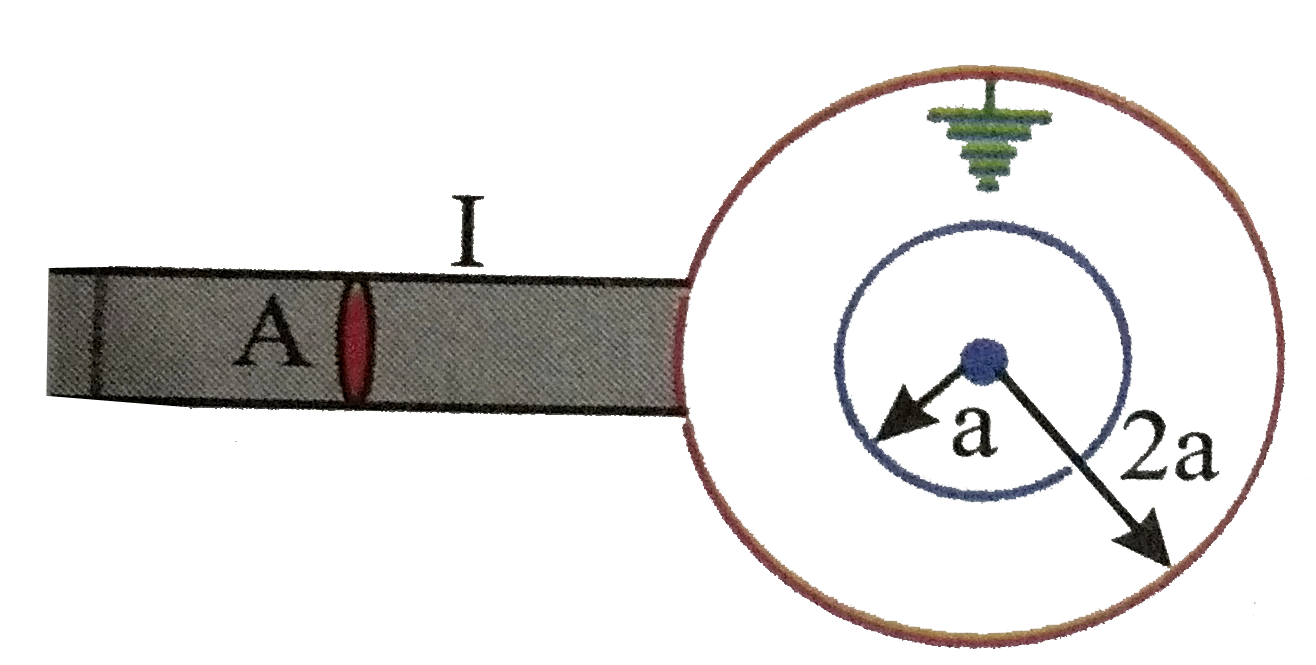Does each incident photon essentially ejcted photoelectron?
No, it may be absorbed in some other way. If the frequency of the incident photon is less than the threshold frequency, there will be no emission of photoelectons at all.
Topper's Solved these Questions
- DUAL NATURE OF RADIATION AND MATTERBOOK - PRADEEPCHAPTER - DUAL NATURE OF RADIATION AND MATTEREXERCISE - NCERT Exerciese question
1 Videos
- DUAL NATURE OF RADIATION AND MATTERBOOK - PRADEEPCHAPTER - DUAL NATURE OF RADIATION AND MATTEREXERCISE - Short answer
1 Videos
- CURRENT ELECTRICITYBOOK - PRADEEPCHAPTER - CURRENT ELECTRICITYEXERCISE - Problems for Practice (B)
2 Videos
- ELECTROMAGNETIC INDUCTION & ALTERNATING CURRENTBOOK - PRADEEPCHAPTER - ELECTROMAGNETIC INDUCTION & ALTERNATING CURRENTEXERCISE - Multiple Choice Questions
1 Videos
Similar Questions
Two metalic plates A and b has the same area of 5×10−4m2 are placed parallel to each other at a distance of 1 cm. Plate B carrins a positive charge of 33.7×10−12C. A monochromatic beam of light, with photons of energy 5eV each, starts falling on plate A at t=0 so that 1016 photons fell on it per square metre per second. Assume that one photoelectron is being emitted for every 106 incident photons. Assuming that all the emitted photoelectrons are collected by plate b and th work function of plat A remains constant at the value 2 eV, the numbeer of photoelectrons emitted up to t=10 s is n×106. Find the value of n.
Negleect the time taken by the photoelectron to reach plate B.
(Take ε0=8.85×10−12C2N−m2)
View SolutionA UV light of wavelength 320 nm is incident on a photosensitive surface and photoelectrons are emitted from it . The stopping potential is 0.48 V. Find
(i) the energy of each incident photon.
(ii) maximum kinetic energy of a photoelectron.
(iii) work function of surface.
View Solution
Knowledge Check
Two initially uncharged concentric than conducting spherical shells of radius a and 2a are as shown and the inner shell is grounded. The work function of outer shell is ϕ0.At time t=0, a continuous parallel beam of monochromatic radiation of cross-section area A and intensity I is incident on outer shell.The energy of each photon is hv such that hv>ϕ0 Assuming for each incident photon one photoelectron is ejected, answer the following questions.
The time after t=0, at which charge on outer sphere becomes constant.
 Ahυ−ϕ0eBhυ−ϕ02eC23hυ−ϕ0eDNone of these
Ahυ−ϕ0eBhυ−ϕ02eC23hυ−ϕ0eDNone of theseTwo initially uncharged concentric than conducting spherical shells of radius a and 2a are as shown and the inner shell is grounded. The work function of outer shell is ϕ0.At time t=0, a continuous parallel beam of monochromatic radiation of cross-section area A and intensity I is incident on outer shell.The enerfy of each photon is hv such that hv>ϕ0 Assuming for each incident photon one photoelectron is ejected, answer the following questions.
The time after t=0, at which charge on outer sphere becomes constant.
 A8π∈0ahυ(hυ−ϕ0)IAe2B4π∈0ahυ(hυ−ϕ0)IAe2C2π∈0ahυ(hυ−ϕ0)IAe2DNone of these
A8π∈0ahυ(hυ−ϕ0)IAe2B4π∈0ahυ(hυ−ϕ0)IAe2C2π∈0ahυ(hυ−ϕ0)IAe2DNone of these10−3 W of 5000A light is directed on a photoelectric cell. If the current in the cell is 0.16μA, the percentage of incident photons which produce photoelectrons, is
A40%B0.04%C20%D10%
A light source of power 16 watts emits light of wavelength 310nm. If all emitted photons are made to strike a metal plate of work function 1.5eV then find out the magnetic of photo-current if 50% of incident photons eject photoelectrons.
View Solution1.5 mW of 400 nm light is directed at a photoelectric cell. If 0.1% of the incident photons produce photoelectrons, find the current in the cell.
View Solution10−3 W of 5000Å light is directed on a photoelectric cell. If the current in the cell is 0.16 mA, the percentage of incident photons which produce photoelectrons, is
View SolutionTwo metallic plates AandB , each of area 5×10m are placed parallel to each other at a separation of 1 cm . Plate B carries a positive charge of 33.7 pc . A monochromatic beam of light, with photons of energy 5 eV each, starts falling on plate A at t = 0, so that 10 photons fall on it per square meter per second. Assume that one photoelectron is emitted for every 10 incident photons. Also assume that all the emitted photoelectrons are collected by plate B and the work function of plate A remains constant at the value 2 eV . Electric field between the plates at the end of 10 seconds is
View SolutionUltraviolet light of wavelength 66.26 nm and intensity 2W/m2 falls on potassium surface by which photoelectrons are ejected out. If only 0.1% of the incident photons produce photoelectrons, and surface area of metal surface is 4m2, how many electrons are emitted per second?
View Solution
